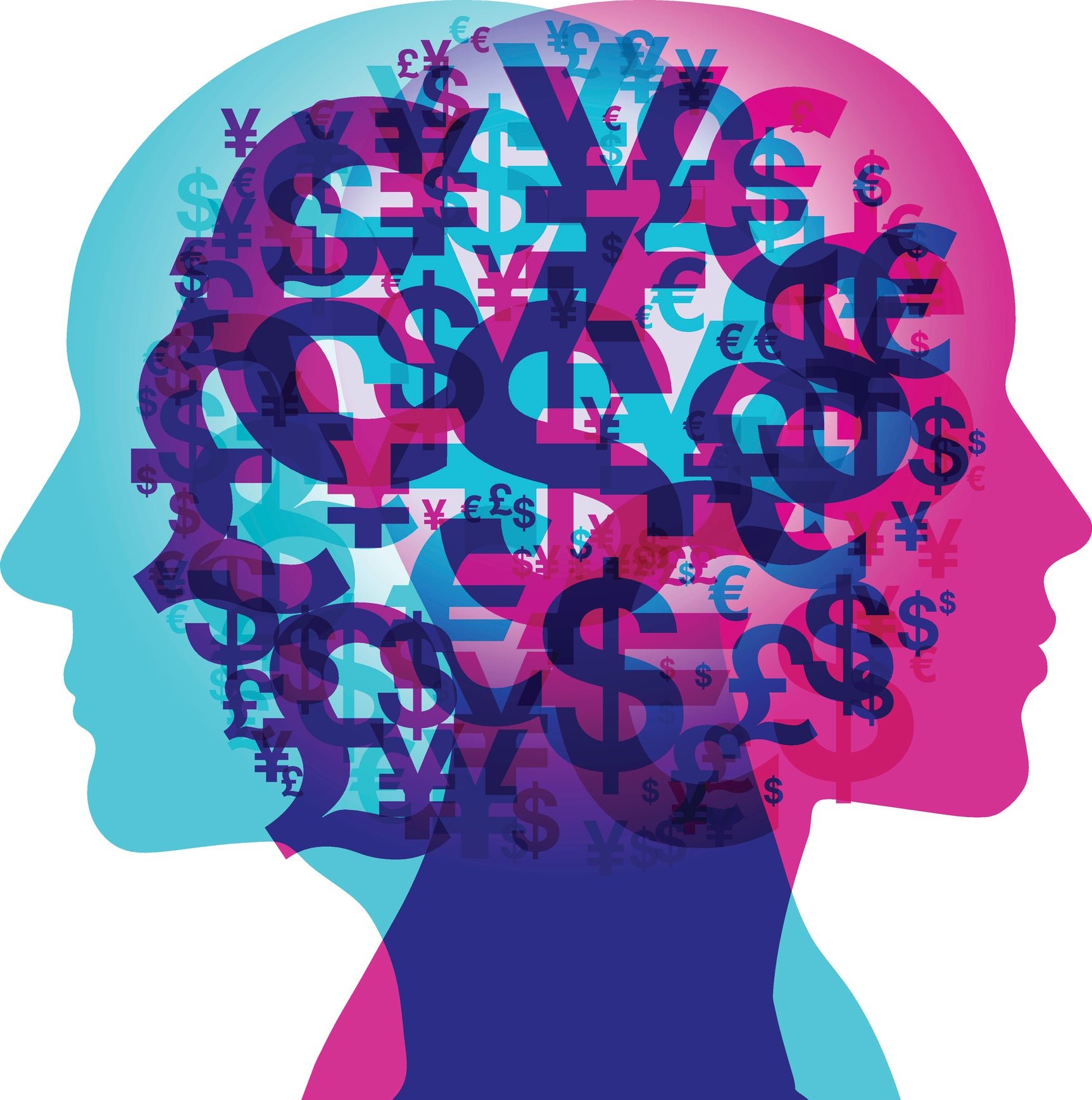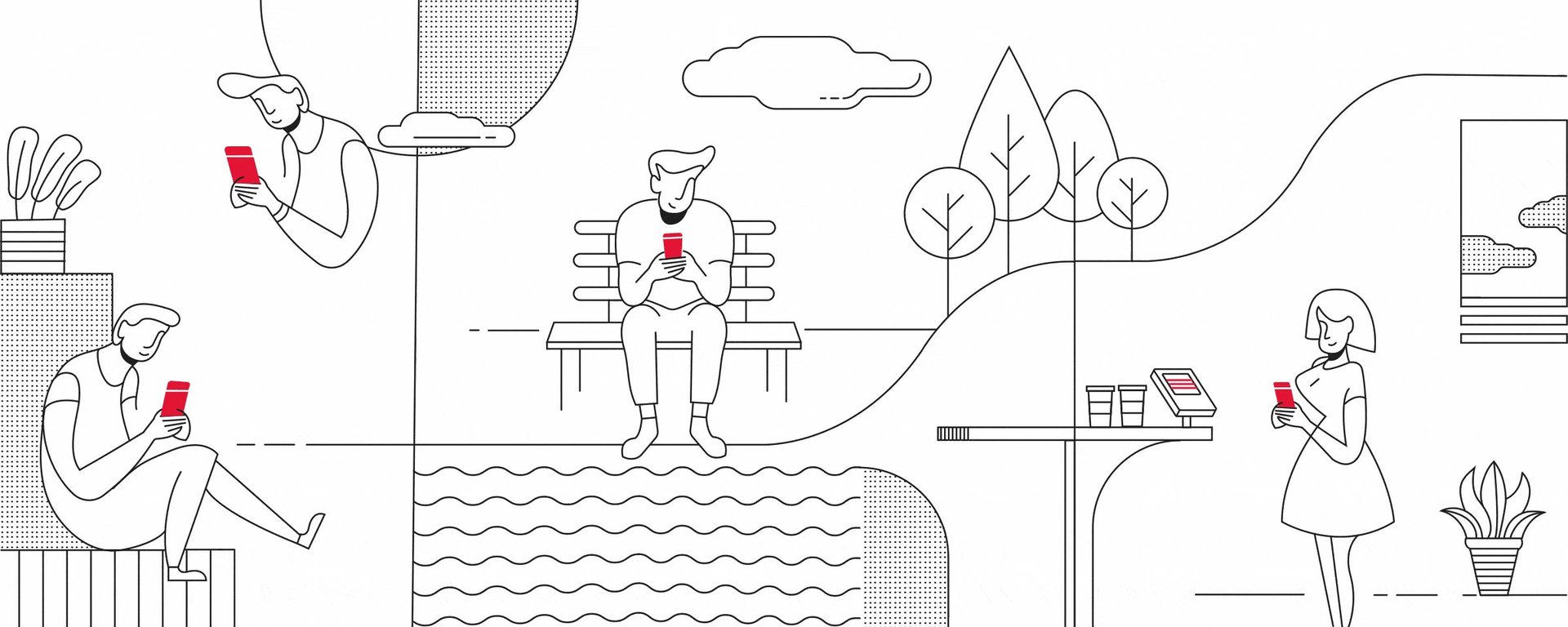Digital-first banking is powering the future of financial services
At the time of this writing, one bitcoin is worth $5,686.74. New ATM companies such as Coinsource are cropping up to install cryptocurrency machines at physical locations such as the local grocery stores. Coinsource now has over 100 bitcoin ATMs across nine states.


At the time of this writing, one bitcoin is worth $5,686.74. New ATM companies such as Coinsource are cropping up to install cryptocurrency machines at physical locations such as the local grocery stores. Coinsource now has over 100 bitcoin ATMs across nine states.
“Millennials trust technology more than they trust people,” says Chelsea McLemore, Associate Creative Director, UX Design and Strategy, R/GA. “But as far as things like Apple Pay, there’s still a habit hurdle to get over.”
According to an August 2017 report released by Goldman Sachs, up to one-third of US mobile phone owners have enrolled in Apple Pay, Samsung Pay, or Android Pay, but just 8%, 6%, and 3% of people, respectively, use it at least once a week. US mobile P2P payment transactions will grow 55%, to $120.38 billion this year, according to research analyst firm eMarketer. By 2021, that figure could double.
Venmo is the primary driver of P2P today, but the financial industry’s rollout of digital payments network Zelle is poised to play a significant part in this growth.
“It’s the classic Mac versus Windows thing,” says Philip Rackin, Executive Director, Consulting, R/GA. “If you look at [Zelle] on a spec sheet, it hands down beats Venmo, with one exception: the social network aspect of it where users share emojis as receipts, which proved, in many ways, to be the killer app of Venmo.”

According to a company press release, Zelle racked up 100 million transactions in its first six months of availability in 2017, with an average of more than 50,000 new consumers enrolling daily. But, Rackin says, in the grand scheme of mobile payments and mobile banking customers, “it has to offer something experiential to attract young consumers.”
For digital payments to become more seamless and invisible, brands must build the right infrastructures and ecosystem of services around them.
“[Millennials] want less time with their banks,” says Kaustav Bhattacharya, Executive Technology Director, R/GA EMEA. “But what they do want is more targeted and quality information that they can access in bite-sized nuggets.
“So whether that’s based on purchase and spending patterns or mashing together other data sets, challenger banks are trying to gather knowledge about [consumers] and what they’re doing so that they can give them those little nudges,” Bhattacharya says, “such as warning a user who is spending 40% more than usual, putting them on track to overdraft.”
As more and more digital-first banking experiences spring up, traditional banks are experimenting with their own services. R/GA São Paulo and Bradesco created and launched Next Bank as a personalized day-to-day banking app that provides advice to help consumers achieve certain milestones at different stages of their financial lives. The app uses AI-based algorithms to monitor and analyze consumer behavior so that it can make more informed recommendations on saving and achieving goals.
“Our in-market research found that millennials would much rather bank with digital services like Google or Facebook,” says Fabiano Coura, VP, Managing Director, R/GA São Paulo. “That’s a very high bar to jump. We knew we needed to rethink the whole experience, one that is proactive and not just based on transactions to fight millennial indifference,” he says.
R/GA embedded a team—including consultants, developers, experience and visual designers, marketing scientists, and communications campaign specialists—with Bradesco’s financial services experts. “Collaboration is really at the core of an innovation like this to be successful,” Coura says.
“Next Bank was really an experiment in accelerating innovation,” he says. “We built this diverse group of people who are not only able to discuss the business challenge, but actually design prototypes and influence decision-making inside the bank.”
Some consumers remain wary about putting money in banking clouds. For larger institutions that have already spent the past decade rebuilding trust with their consumers, carving out their own niche in the product and service ecosystem poses new opportunities.

“What’s of great interest to digital leaders within banks are the implications of artificial intelligence and deep learning on anticipating people’s requirements and being really good at serving up the right suggested solution in context,” says Andrew Lam-Po-Tang, Executive Director, Consulting, R/GA EMEA. “They understand very clearly that they need to be much more consumer-centric, mobile- and digital-first, and focused on lifestyle stages and needs, rather than on products and transactions.
“But every bank is structured around products,” Lam-Po-Tang says. “Because of the fundamental structure and design of the business, all of the strategic focus is not around a common view of the customer but in fact around individual product silos.”
As banks try to adapt to these new consumer behaviors, an entirely new technology is starting to take the industry by storm: the anonymous distributed ledgers known as blockchain.
“A lot of banks are going to incorporate blockchain and distributed ledger technologies into their architectures,” says Nick Coronges, EVP, Global Chief Technology Officer, R/GA. “But it’s one of these things where, in the short term, we’ll probably overhype the expectations.”
For now, determining a new value proposition and becoming more consumer-centric are the most urgent challenges.
“Financial services companies must create and modernize their digital architectures and, ultimately, their consumer experiences,” Coronges says. “The world has changed, culture has changed, consumer behavior has changed, and technology has changed. Banks will need to adapt to the way that the next generation of consumers live.”
This article was produced by R/GA and not by the Quartz editorial staff.